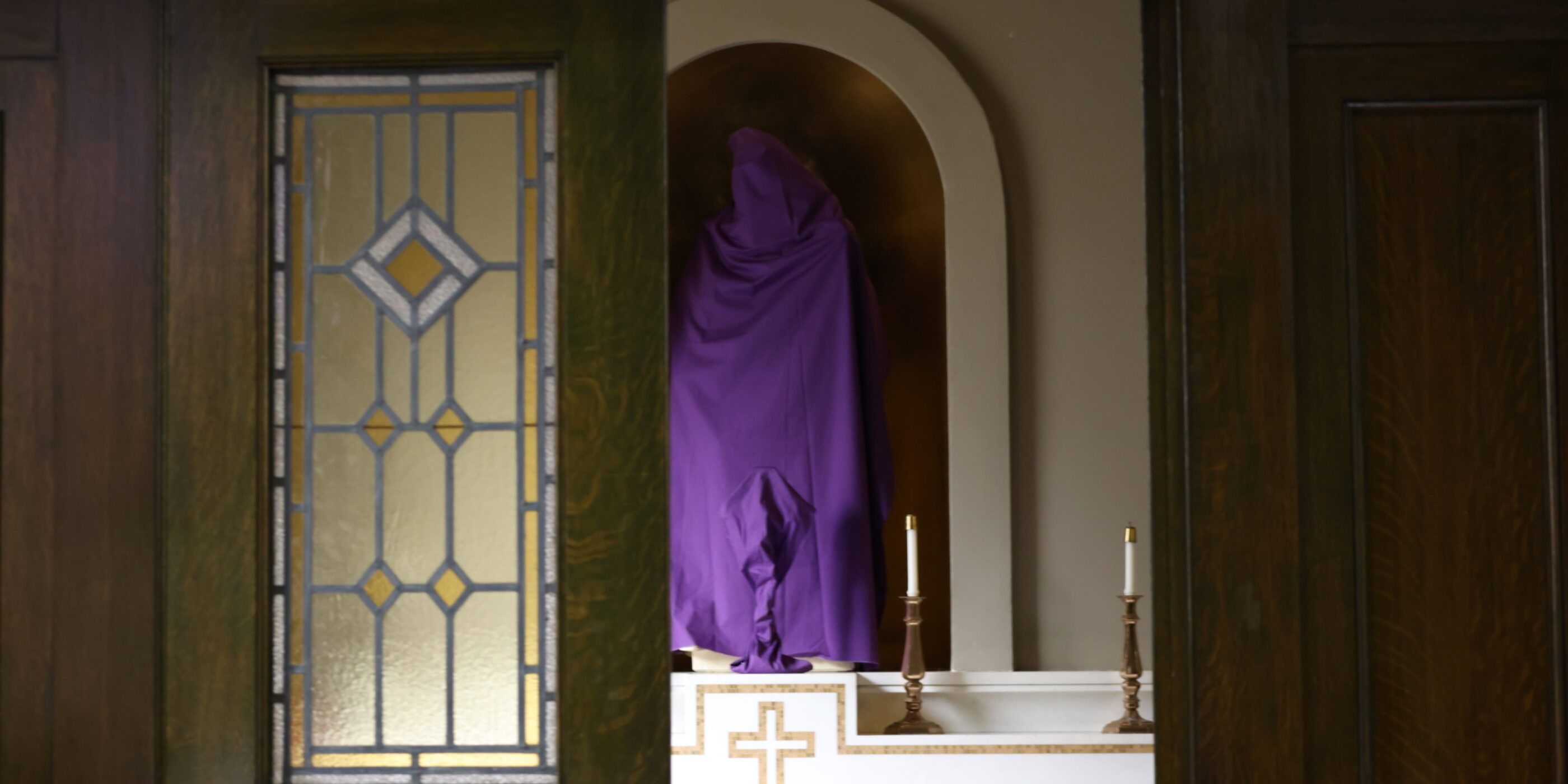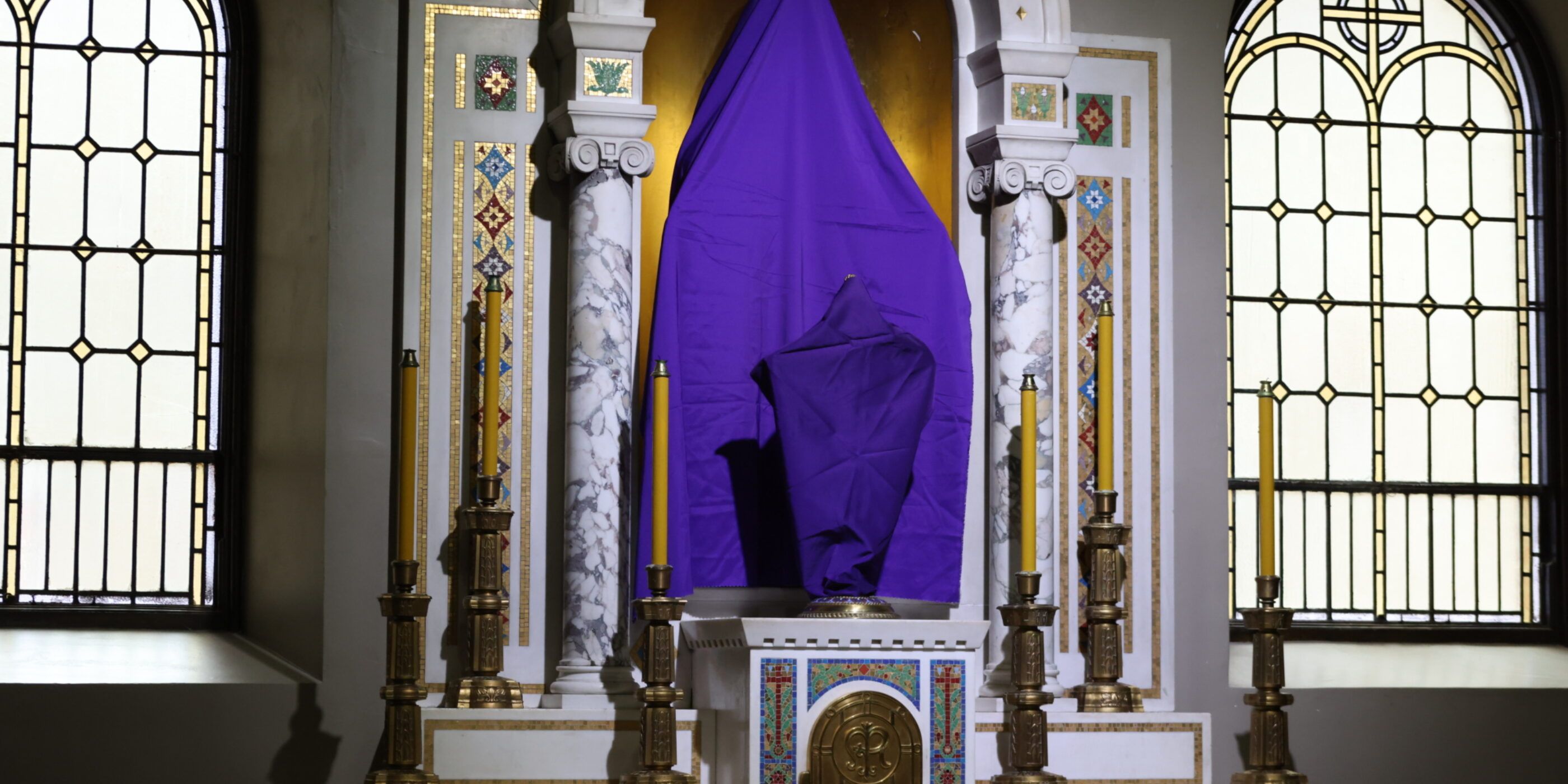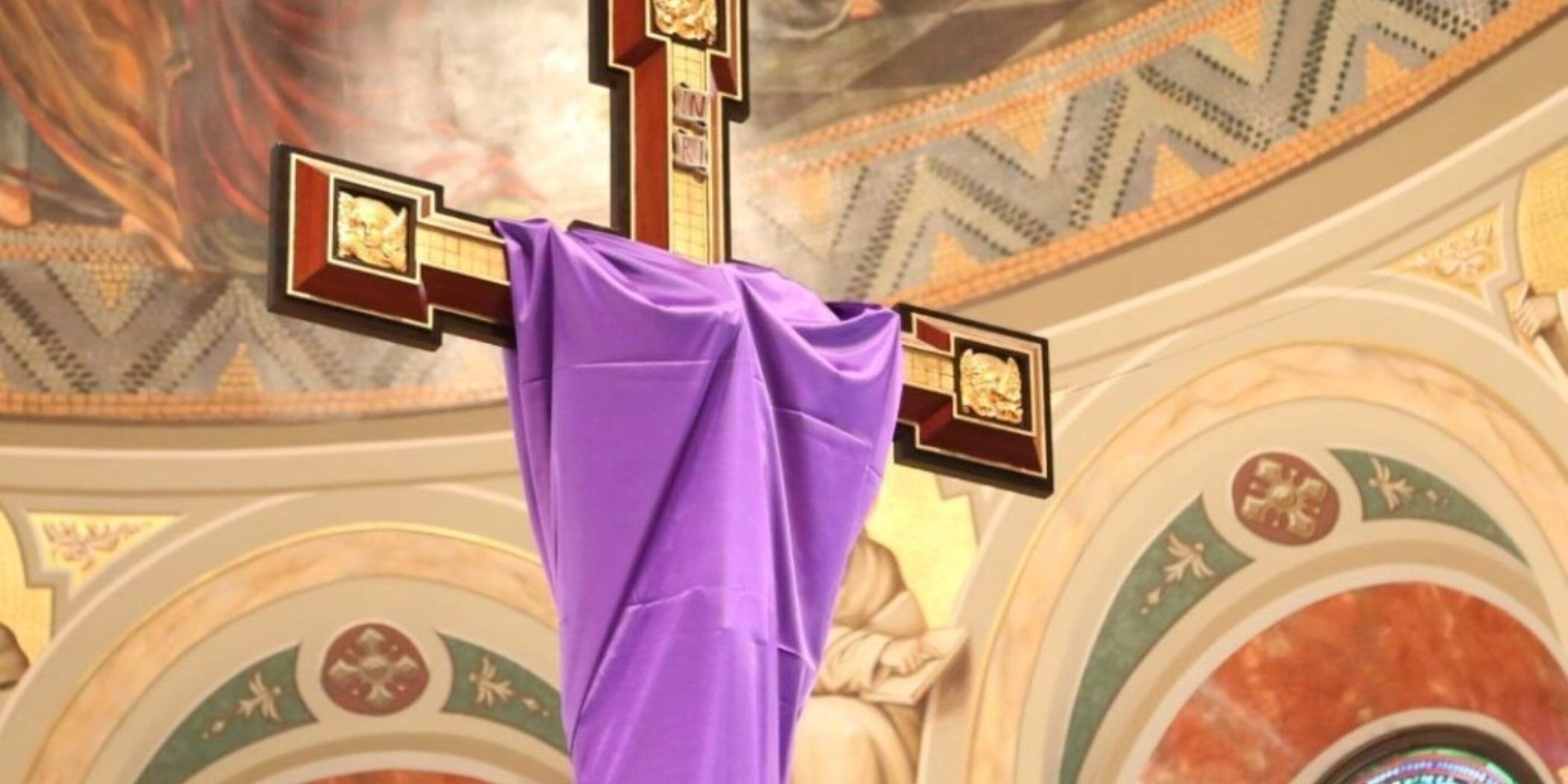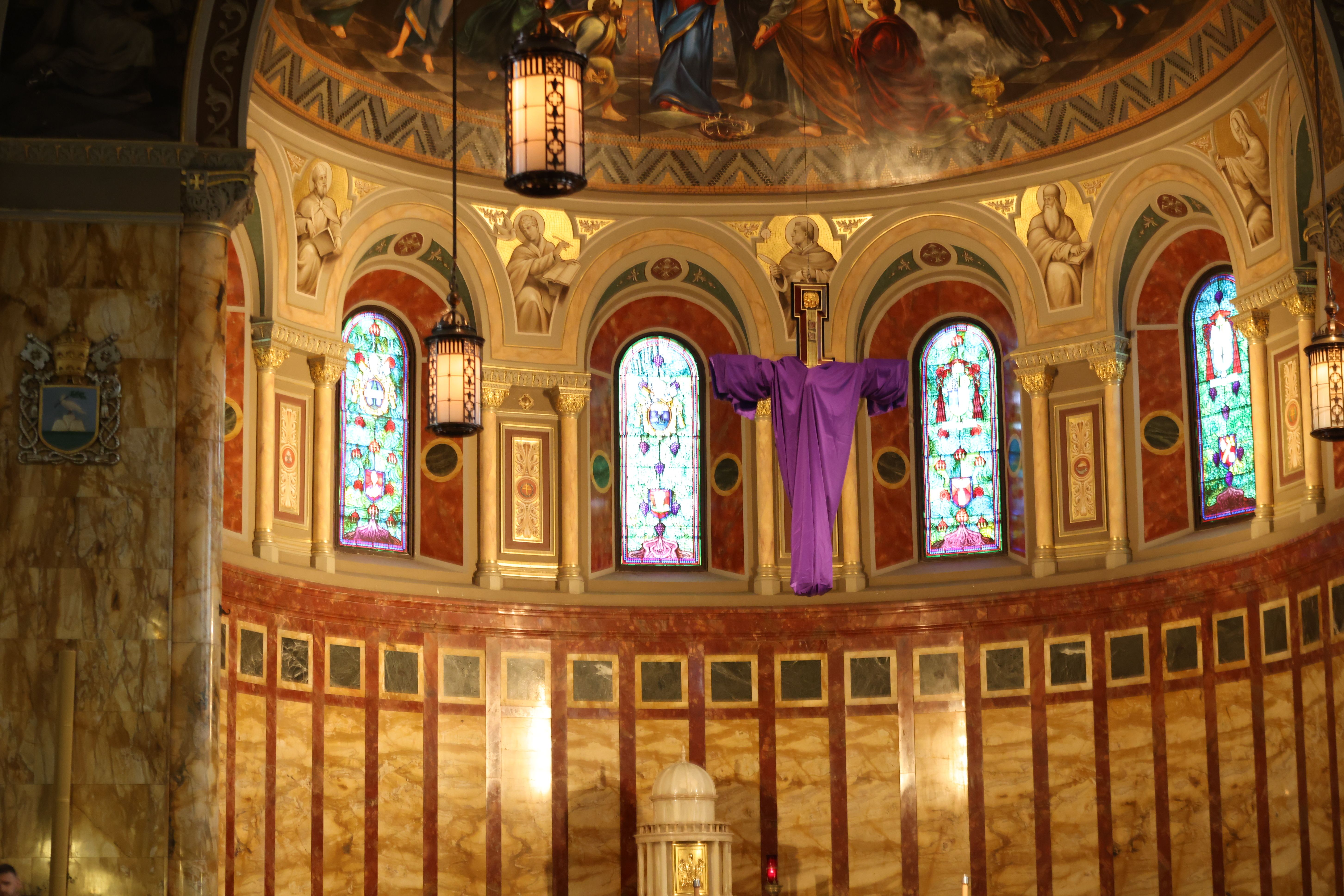Understanding the Lenten Tradition of Sacred Veiling
As we journey deeper into Lent, a noticeable change occurs in many of our churches: statues, sacred images, and even the crucifix are veiled in purple cloth. This tradition, rich with symbolism, often stirs curiosity and prompts the faithful to ask: Why do we veil images during Lent?
To understand this ancient practice, we must first consider the liturgical calendar. The final two weeks of Lent are known as Passiontide, beginning on the Fifth Sunday of Lent. While the season begins with Jesus in the desert (as reflected in the Gospel for the First Sunday of Lent), Passiontide marks a solemn shift in focus—from the broader themes of penance and conversion to the intense contemplation of Christ's Passion and suffering.

A Liturgical Pause for Reflection
According to the Roman Missal:
“In the Dioceses of the United States, the practice of covering crosses and images throughout the church from [the fifth] Sunday [of Lent] may be observed. Crosses remain covered until the end of the Celebration of the Lord’s Passion on Good Friday, but images remain covered until the beginning of the Easter Vigil.”
This veiling is not merely decorative or traditional—it is intentionally disorienting. In a sacred space typically filled with visual reminders of God's presence and the communion of saints, the sudden absence of these familiar images calls us to a deeper spiritual awareness. It is as if the Church is inviting us to feel the weight of loss—to walk with Christ through His betrayal, suffering, and death, with our senses sharpened by absence.

An Invitation to Longing and Anticipation
The veils remind us that something is hidden—and we long to see it revealed. This echoes our inner longing for Easter, for the Resurrection, for the unveiling of the glory of Christ. Much like the temporary silence of the Alleluia during Lent, the veiling symbolizes the spiritual exile of humanity, a longing for our true and eternal home in God.
In this way, the Church helps us to spiritually “fast” with our eyes. We are drawn inward, away from visible consolation, to reflect more deeply on the mystery of the Cross. The veils serve as a visual call to immediate preparation: Get ready, something profound is about to happen.
The Mystery of the Hidden Cross
One of the most striking aspects of this tradition is that even the crucifix is veiled. Why would we cover the very image of Christ crucified, especially during Passiontide?
The answer lies in the mystery and paradox of the Cross. In veiling the crucifix, we enter into the growing tension and drama of the Passion narrative. We are not ignoring the Cross—we are intensifying our awareness of it. The veil creates an intentional absence that makes us ache for the reappearance of our crucified and risen Lord.


The Unveiling: A Moment of Glory
When the veils are finally removed—at the Easter Vigil—the symbolism reaches its climax. Light returns to the darkened church, Alleluia resounds once more, and the images that had been hidden from our sight are revealed in splendor.
This unveiling mirrors the Resurrection itself. As Christ rose from the tomb, the veil between God and man was torn open. The separation caused by sin was overcome. As Jesus said in John 11:25-26:
“I am the resurrection and the life; whoever believes in me, even if he dies, will live, and everyone who lives and believes in me will never die.”
We are reminded that this world is not our home in full. We live, even now, in a kind of veiled reality, awaiting the fullness of the Kingdom of God. Through the Resurrection, Christ lifts that veil and reveals to us the promise of eternal life.
A Sacred Silence That Speaks
The veiling of statues and images is a spiritual discipline—a visual silence that prepares us to see and hear with new clarity. It is a tradition that speaks not only to our minds but to our hearts and senses, drawing us into the sacred mysteries of Holy Week.
So next time you enter your parish and see the purple veils draped over holy images, let it stir your heart. Let it remind you of the sacrifice Christ made for us, and the glorious joy that awaits when the veil is finally lifted.

